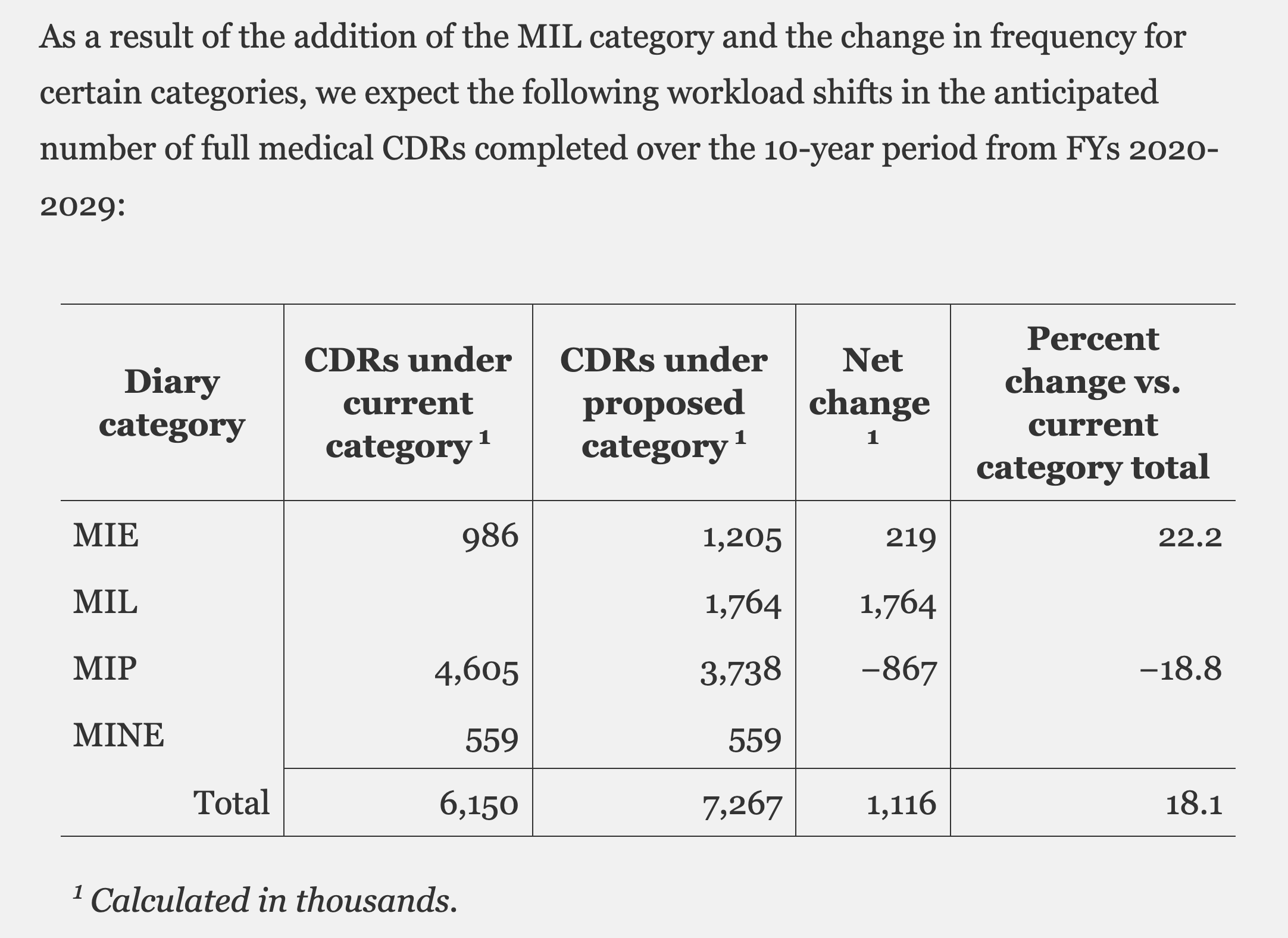According to the logic of the administration's own proposals, the changes to how "continuing disability reviews" take place would indeed lead to thousands of recipients losing Social Security disability benefits.
That loss of benefits would not be arbitrary, and the criteria and standards used to determine a recipient's eligibility for disability benefits would not change. Rather, the frequency of eligibility reviews would increase, thus discovering ineligibility sooner and more frequently.
In December 2019, readers asked us about reports that claimed the administration of U.S. President Donald Trump had proposed changes to the way Social Security disability payments are made, which could cause thousands, even hundreds of thousands, to lose their benefits.
On Dec. 12, the Philadelphia Inquirer and Chicago Tribune posted an article with the headline "Trump Administration Proposes Social Security Rule Changes That Could Cut Off Thousands of Disabled Recipients." The article reported that:
"The Trump administration is proposing changes to Social Security that could terminate disability payments to hundreds of thousands of Americans, particularly older people and children. The new rule would change aspects of disability reviews — the methods by which the Social Security Administration determines whether a person continues to qualify for benefits. Few recipients are aware of the proposal, which is open for public comment through January."
The left-leaning website Common Dreams published an article with the headline "'A National Disgrace': Trump Proposes Social Security Change That Could End Disability Benefits for Hundreds of Thousands.'" That story reported:
"Activists are working to raise public awareness and outrage over a little-noticed Trump administration proposal that could strip life-saving disability benefits from hundreds of thousands of people by further complicating the way the Social Security Administration determines who is eligible for payments."
On the face of it, the changes proposed by the Trump administration would not, in fact, directly or immediately strip disability benefits from thousands of would-be recipients, rather the changes would introduce more (and more frequent) eligibility reviews for those who wish to receive them. However, some critics have argued that those increased bureaucratic requirements would over-burden some would-be recipients, in particular especially vulnerable recipients, and would ultimately (albeit indirectly) result in thousands losing disability benefits.
Analysis
The Social Security Administration distributes disability benefits in two principle ways: Social Security Disability Insurance (SSDI), which typically provides benefits to people based on their previous Social Security tax contributions and history of work, and is paid out of the Social Security insurance fund; and Supplemental Security Income (SSI), which typically provides benefits to people based on their disability status and inability to work, and is paid out of general tax coffers.
In order to prevent potential abuse and waste in the system, the Social Security Administration conducts "continuing disability reviews," essentially investigating whether each recipient still has a disabling condition, and if so, which kind. Those reviews take place more or less frequently, depending on the nature of each individual's disability, broken into three "medical diary categories," as follows:
- Medical Improvement Expected: Review every six to 18 months. e.g. bone fractures, kidney disease (alleviated by kidney transplant), low birth weight.
- Medical Improvement Possible: Review every three years. Non-permanent impairments. e.g. Schizophrenia, chronic ulcerative colitis, epilepsy.
- Medical Improvement Not Expected: Review every five to seven years. e.g. Amyotrophic lateral sclerosis (ALS/Lou Gehrig's disease), Parkinson's disease, leg amputation at the hip.
In November, the Social Security Administration published its proposals to make several changes to the review system. The most significant proposal was to add a fourth medical diary category, "Medical Improvement Likely." Recipients placed in that category would undergo a review every two years.
According to a document accompanying the proposals, the decision to introduce the fourth category was made, in part, because the administration saw a pattern whereby some in the "Medical Improvement Expected" category were being prematurely subjected to re-evaluation, after six-18 months, before a medical improvement had the chance to take hold, and some in the "Medical Improvement Possible" category had successfully treated their impairment comfortably within the three-year review interval.
The introduction of the new category would therefore mean the bureaucratic burden on some recipients would actually be lessened, since they would be subject to review less frequently, though clearly it would also mean others would be subject to more frequent reviews. On the whole, the administration has estimated that, between 2020 and 2029, the new category would tend towards requiring more frequent reviews for those currently in the "Medical Improvement Possible" category, rather than less frequent reviews for those currently in the "Medical Improvement Expected" category:
The administration expects the introduction of the "Medical Improvement Likely" category to lead to an 18 percent increase in the total number of reviews undertaken over the next decade. This would therefore lead to an increased up-front cost in administering the disability benefits programs, and an increased aggregate bureaucratic burden to recipients (even if some individual recipients would actually undergo reviews less frequently).
Greater scrutiny of individual cases, and enhanced enforcement of eligibility criteria, results in some recipients no longer being deemed eligible, and no longer receiving either SSDI or SSI, which saves money for the Social Security insurance fund and the Treasury, respectively. For the 2015 fiscal year, for example, the Social Security Administration calculated a 19.9:1 return on investment rate for disability benefits enforcement — meaning that for every $1 spent on performing reviews, the government would save $19.90 on disability benefits that would otherwise have been paid, over the course of a lifetime, to recipients who are now deemed ineligible. To be specific, the administration estimated that the $717 million spent on reviews in 2015 would ultimately save $14.3 billion in lifetime disability benefit payments.
So the introduction of the Trump administration's proposals is highly likely to ultimately lead to thousands of disability benefits recipients no longer receiving those benefits — both because some will be overburdened by the bureaucratic demands of more frequent reviews, and because some recipients whose medical status no longer meets the eligibility criteria will have that ineligibility discovered sooner. A considerable measure of truth, therefore, exists in the reports published by the Philadelphia Inquirer and Common Dreams.
However, those articles failed to mention an important component to the administration's proposals: They would not change how a recipient's eligibility is determined, only how often that determination takes place. As the proposal stated: "We are not changing the Medical Improvement Review Standard that we use to determine whether a person continues to meet the disability requirements of the Act."
This means that, while the proposed increase in the number and frequency of reviews was highly likely to ultimately cause thousands to lose their benefits, that loss of benefits would not be arbitrary, or based on an application of a new and different standard for determining whether someone's health has improved. The standards and criteria for assessing whether an improvement has taken place would be the same as currently exist, and only the frequency of those reviews would change.
In other words, some recipients would be subject to more frequent reviews, but if those more frequent reviews result in a finding that the recipient still has a qualifying disability or impairment — based on the same criteria as currently apply — the recipient would continue to receive disability benefits.
It could be that, as some critics have argued, the proposal represents an elegant way for the administration to save money by removing thousands from the recipient rolls without having to change eligibility criteria — the latter a move that would be more likely to cause public outrage or political opposition. However, on its face at least, the proposal involves enhanced enforcement of existing eligibility standards and criteria. That's an important distinction, and a significant omission from news articles that reported, with some justification, that the Trump administration had proposed changes to Social Security disability benefits that would cause thousands to be stripped of those benefits.


